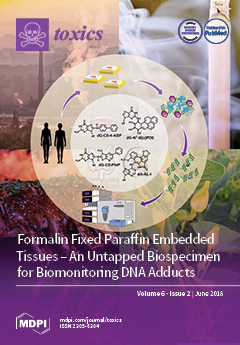Carbon tetrachloride (CCl
4) is an efficient but highly toxic solvent, used in households and commercially in the industry under regulatory surveillance to ensure safety at the working place and to protect the workers’ health. However, acute unintentional or intentional intoxications by
[...] Read more.
Carbon tetrachloride (CCl
4) is an efficient but highly toxic solvent, used in households and commercially in the industry under regulatory surveillance to ensure safety at the working place and to protect the workers’ health. However, acute unintentional or intentional intoxications by CCl
4 may rarely occur and are potentially life-threatening. In this review article, therapy options are discussed that are based on a literature review of traditional poisoning cases and the clinical experience with 16 patients with acute poisoning by CCl
4. Among various therapy options, the CO
2-induced hyperventilation therapy will be considered in detail as the most promising approach. This special therapy was developed because only around 1% of the intoxicating CCl
4 is responsible for the liver injury after conversion to toxic radicals via microsomal cytochrome P450 2E1 whereas 99% of the solvent will leave the body unchanged by exhalation. Therefore, to enhance CCl
4 elimination through the lungs, CO
2 is added to the inspiration air at a flow rate of 2–3 L min
−1 in order to achieve hyperventilation with a respiratory volume of 25–30 L min
−1. Under this therapy, the clinical course was favorable in 15/16 patients, corresponding to 93.8%. In essence, patients with acute CCl
4 intoxication should be treated by forced ventilation.
Full article






